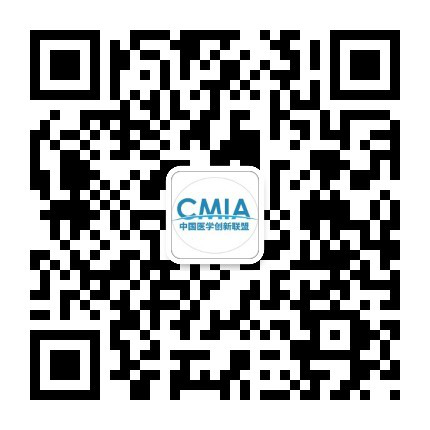[罂粟摘要]镁剂导致舒更葡糖逆转罗库溴铵诱导的神经肌肉阻滞后再发肌松:一项随机、双盲、对照试验
关注罂粟花,共同学习麻醉学最新文献!
镁剂导致舒更葡糖逆转罗库溴铵诱导的神经肌肉阻滞后再发肌松:一项随机、双盲、对照试验
贵州医科大学 麻醉与心脏电生理课题
翻译: 潘志军
编辑: 严旭
审校: 曹莹
研究目的:本研究测试了镁剂在舒更葡糖逆转后导致再松弛的假设。
设计:单中心、前瞻性、随机、双盲、对照试验。
地点:巴西里约热内卢的三级医院。
患者:纳入60例择期行耳鼻喉手术的患者。
干预措施:所有患者接受全凭静脉麻醉且罗库溴铵(0.6 mg/kg)单次给药。在30例患者中,当出现1个或2个强直后的计数时,用舒更葡糖(4 mg/kg)逆转神经肌肉阻滞(深度阻滞组)。在另外30例患者中,当出现4个成串刺激第二个肌颤搐时,用舒更葡糖(2 mg/kg)逆转神经肌肉阻滞(中度阻滞组)。当标准化的4个成串刺激比值恢复到≥0.9时,每组患者被随机分配接受静脉注射镁剂(60 mg/kg)或安慰剂10分钟。神经肌肉功能由加速度仪测量。
测量指标:主要结果是出现再松弛(标准化的4个成串刺激比值< 0.9)的患者数。次要结果是在60分钟后用额外的舒更葡糖进行逆转。
主要结果:在深度阻滞组中,接受镁剂的14例患者中有9例(64%)出现标准化的4个成串刺激比值< 0.9,而接受安慰剂的14例患者中有1例(7%),RR 9.0(95% CI: 62–1.30),p = 0.002),其中4例用舒更葡糖进行了逆转。在中度阻滞组中,接受镁剂的15例患者中有11例(73%)出现神经肌肉阻滞再发,而接受安慰剂的14例患者中有0例(0%),p < 0.001),其中2例用舒更葡糖进行了逆转。深度阻滞和中度阻滞组再松弛的绝对差异分别为57%和73%。
结论:单次镁剂导致罗库溴铵诱导的深度和中度神经肌肉阻滞用舒更葡糖逆转后2分钟内出现标准化的4个成串刺激比值< 0.9。额外的舒更葡糖逆转了持续的再松弛。
原始文献来源:
Paulo A. Germano-Filho, Ismar L. Cavalcanti, Angelo J.Q.R. Micuci,et al.Recurarization with magnesium sulfate administered after two minutes sugammadex reversal: A randomized, double-blind, controlled trial [J]. (J Clin Anesth 2023 Oct;89).
英文原文:
Recurarization with magnesium sulfate administered after two minutes sugammadex reversal: A randomized, double-blind, controlled trial
Abstract
Study objective: The current study tested the hypothesis that magnesium sulfate after reversal with sugammadex causes recurarization.
Design: A single-center, prospective, randomized, double-blind, controlled trial.
Setting: Terciary care hospital in Rio de Janeiro, Brazil.
Patients: Included 60 patients undergoing for elective otolaryngological surgery.
Interventions: All patients received total intravenous anesthesia and a single dose of rocuronium (0.6 mg/kg). In 30 patients, the neuromuscular blockade was reversed with sugammadex (4 mg/kg) at the reappearance of one or two posttetanic counts (deep-blockade series). In 30 other patients, sugammadex (2 mg/kg) was administered
at the reappearance of the second twitch of the train-of-four (moderate-blockade series). After the normalized train-of-four ratio recovered to ≥0.9, the patients in each series were randomized to receive intravenous magnesium sulfate (60 mg/kg) or placebo for 10 min. Neuromuscular function was measured by acceleromyography.
Measurements: The primary outcome was the number of patients who exhibited recurarization (normalized trainof-four ratio < 0.9). The secondary outcome was rescue with an additional dose of sugammadex after 60 min.
Main results: In the deep-blockade series, a normalized train-of-four ratio < 0.9 occurred in 9/14 (64%) patients receiving magnesium sulfate and 1/14 (7%) receiving placebo, RR 9.0 (95% CI: 62–1.30), and (p = 0.002), with four rescues with sugammadex. In the moderate-blockade series, neuromuscular blockade recurred in 11/15 (73%) patients receiving magnesium sulfate and in 0/14 (0%) receiving placebo (p < 0.001), with two rescues. The absolute differences in recurarization were 57% and 73% in the deep-blockade and moderate-blockade, respectively.
Conclusions: Single-dose magnesium sulfate led to a normalized train-of-four ratio < 0.9, 2 min after recovery from rocuronium-induced deep and moderate neuromuscular blockade using sugammadex. Additional sugammadex reversed prolonged recurarization.
不感兴趣
看过了
取消
不感兴趣
看过了
取消
精彩评论
相关阅读





 打赏
打赏


















 010-82736610
010-82736610
 股票代码: 872612
股票代码: 872612




 京公网安备 11010802020745号
京公网安备 11010802020745号


